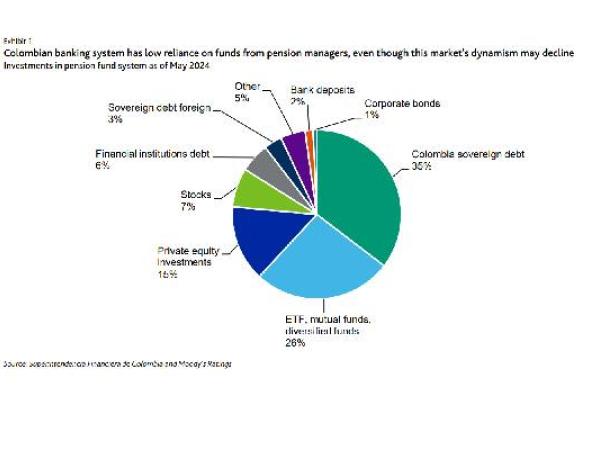While waiting for the pension reform to come into effect and for the future of this law to be defined in the high courts, warnings continue to arrive regarding the effects that this law will generate in the pension system, which will leave the main affected to the Private Pension Fund Administrators (AFP), since the new model will be mostly state-owned.
This is the warning in a recent report by the Moody’s agency, according to which these private funds will suffer a drastic reduction next year, a situation that could also affect their risk ratings in the investment market and already puts on the table the need for them to reinvent themselves.
The Attorney General’s Office opened an investigation against the Ministry of Finance for the scandal in Risk Management
In reviewing the current state of the pension system, the analysis begins by recalling that the new law, which comes into force in July 2025, requires that people who earn up to 2.3 times the minimum wage direct your pension contribution to the government-run public pension fund, Colpensiones.
“Those people would have the option of using a private pension fund for the amount that exceeds the 2.3 times threshold. Under these terms, around 80% of the working-age population in Colombia would have a pension solely with Colpensiones,” he explained.
Taking this into account, it is noteworthy that private funds manage Currently, there are about $424 billion in pensions and they serve about 74% of the nation’s pensioners, while Colpensiones served the remaining 25%. According to Moody’s, this scheme is the one that will change the most and will leave the AFPs in an unfavorable situation, which will have to reinvent themselves.
“While the plan may be socially positive, the reform is negative for the credit rating of private pension managers, whose potential market will be drastically reduced. Private pension managers, such as Sura Asset Management (SUAM, Baa1 negative), the largest asset manager in Colombia, will have to adjust their businesses to the new reduced scope of the market. private pensions and increase their focus on the overall asset management business,” the report says.
Petro accepted the resignation of the Director of National Intelligence, implicated in the UNGRD case
For Moody’s, if these changes are not carried out in the best way, the future of the AFPs would be put at risk and in this sense it suggests that there are several approaches that they can begin to work on to ensure their permanence in the market.
Moody’s Pension Reform Report
Courtesy.
Social changes
This report also says that in social terms, the new standard will guarantee that all people of retirement age receive a minimum wage of $223,000 per month, which they hope will strengthen the fight against poverty, since currently only one in four Colombians manages to retire.
“The reform stipulates that men who have contributed 900 weeks (around 17.3 years) and women who have contributed 750 weeks (around 14.4 years) will remain in their place,” the analysis says.
However, remember that “there will be no transfer of assets under management; the current funds of employees with income below the threshold of 2.3 times The minimum income that is in the private pension managers (AFP) will not be transferred to Colpensiones.”
‘Investment in the sector is quite compromised’: Claro
“AFPs will not lose assets under management and will also be allowed to charge a management fee of up to 0.7% of the money in their care, protecting their profitability in the medium term. For those with salaries above the 2.3 times threshold, the AFP minimum fee for new contribution flows will be 0.8%, compared to the current 3.0%,” he stressed.
In other details about the changes that will come with the pension reform next year, Moody’s adds that an employee’s pension contribution is maintained at 16% of his or her monthly income, with the employer contributing 75% and the employee contributing the remaining 25% of the total contribution.

Moody’s.
The Weather Archive
“The reform also indicates that the Banco de la República, the Central Bank of Colombia, will be responsible for managing the new public savings funds and will define their investment parameters. Depending on how the Banco de la República allocates these funds, long-term asset allocation could become less dynamic,” he concluded.
Finally, he notes that of the more than $420 billion currently managed by private pension funds, approximately 8% was invested in bank notes and deposits, as well as in debt from financial institutions, which for them marks an effective path to advance in the new system.






![[Img #74676]](https://thelatestnews.world/wp-content/uploads/2024/12/Laser-artificial-neuron-150x150.jpg)








Add Comment